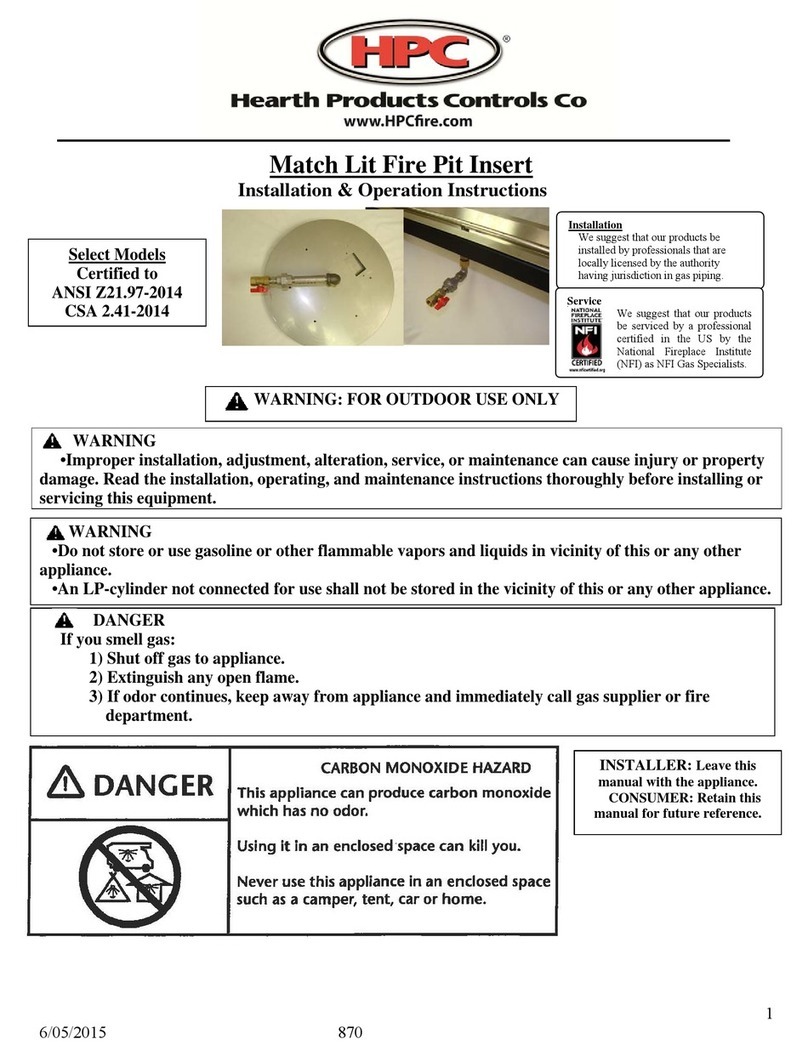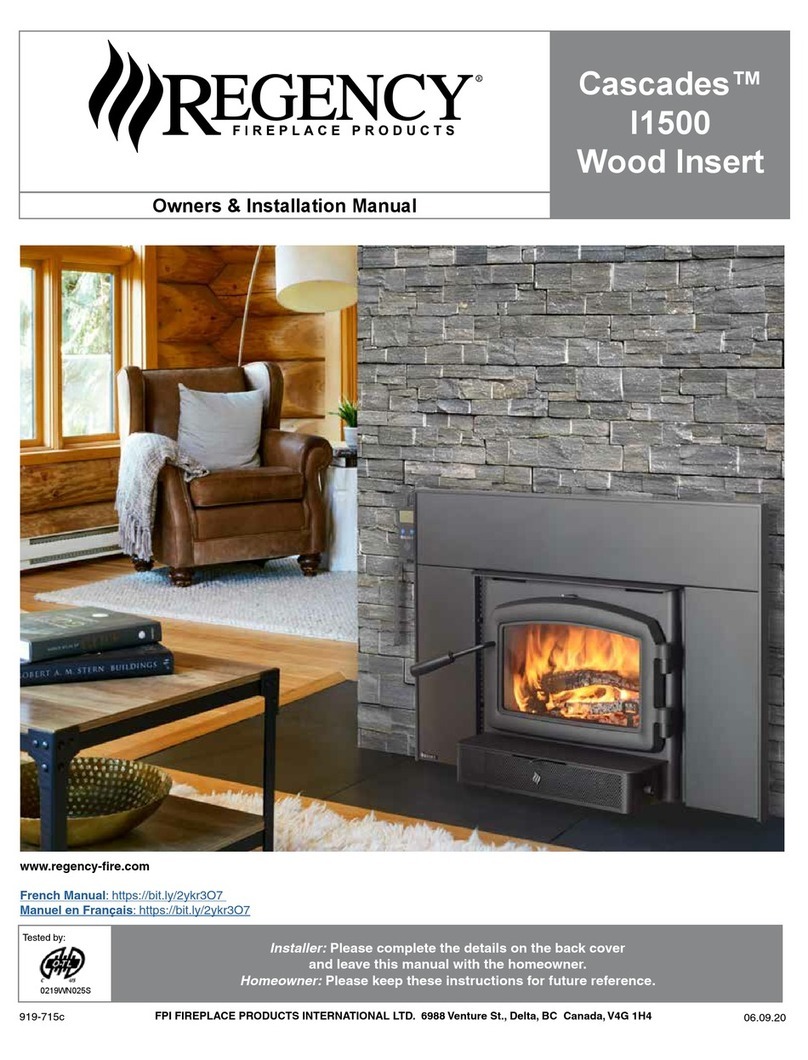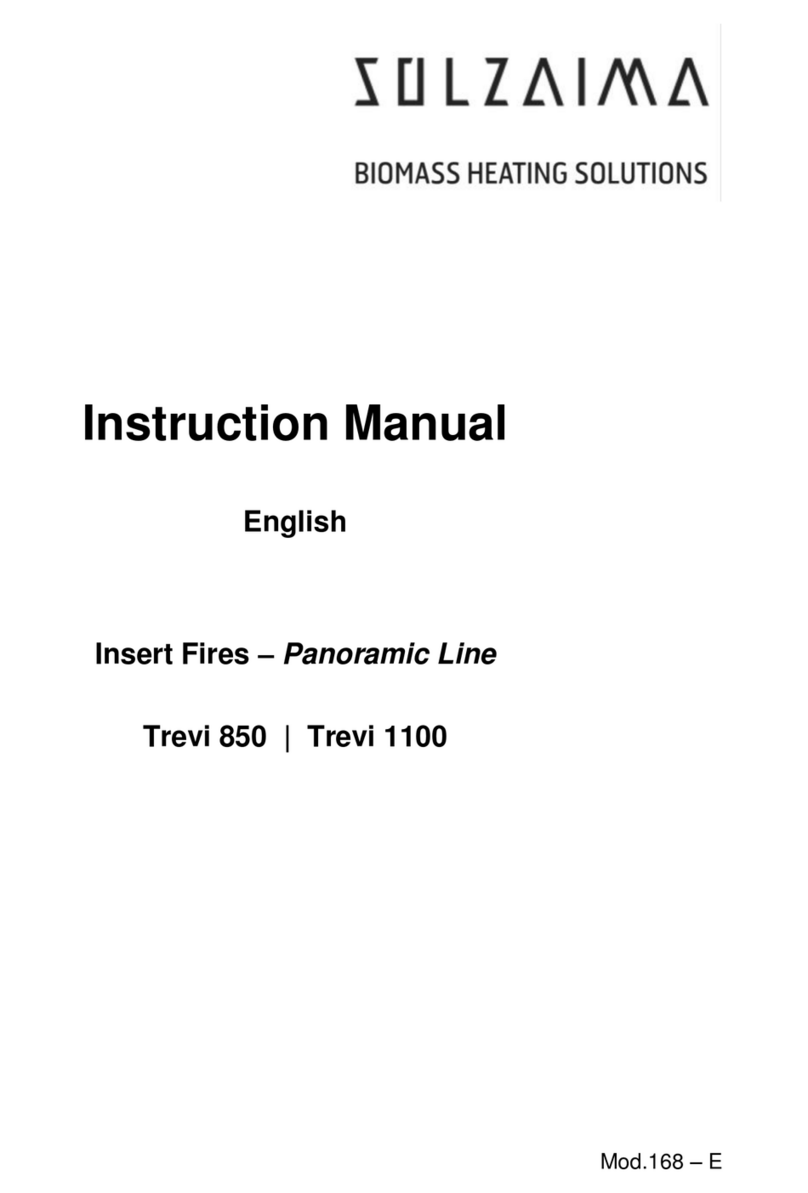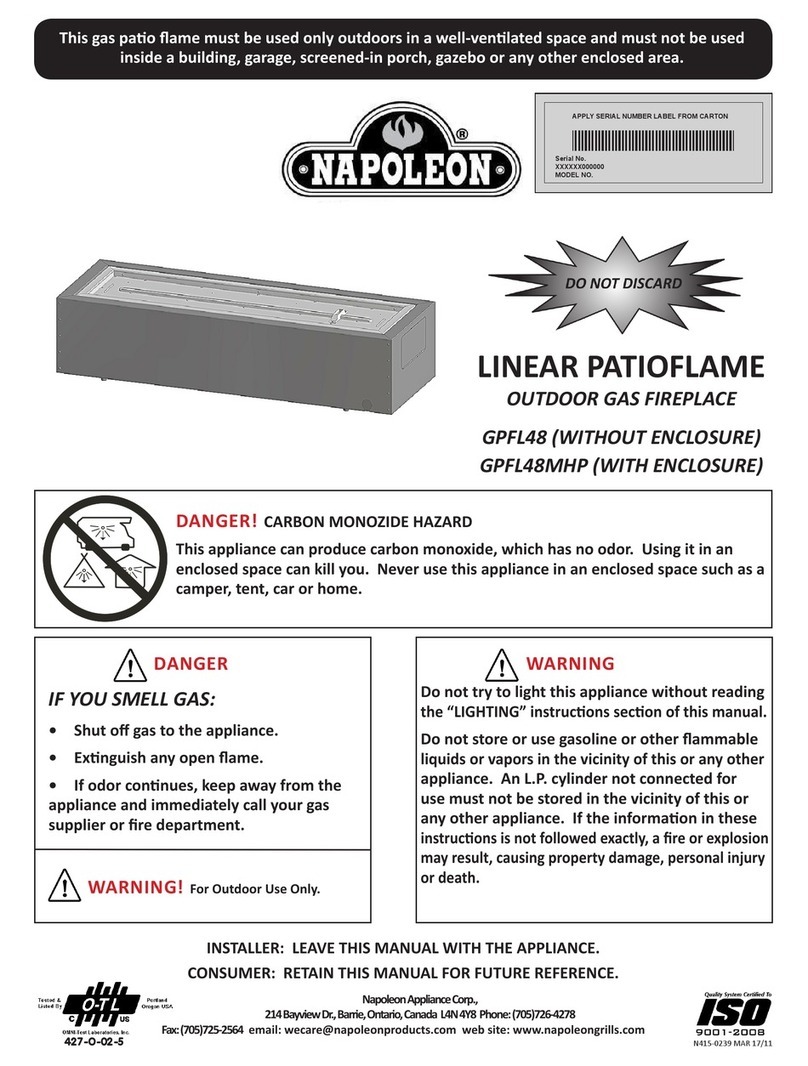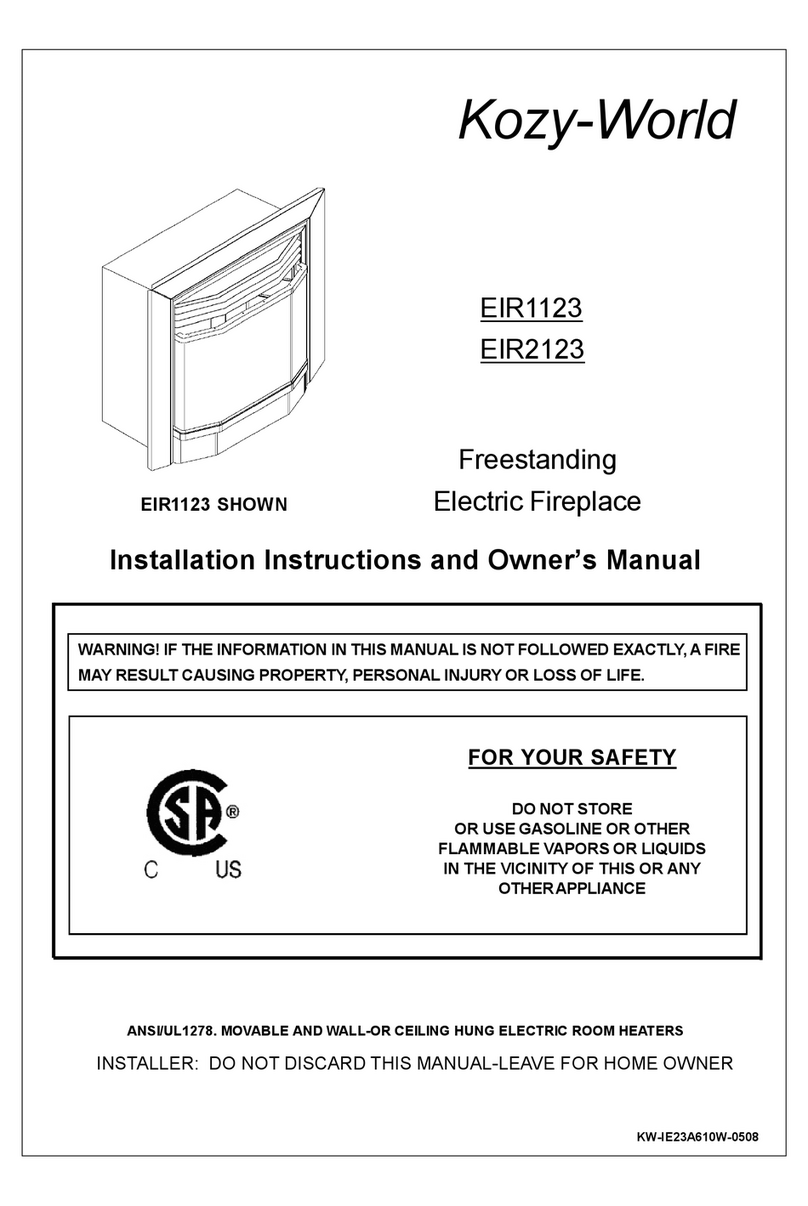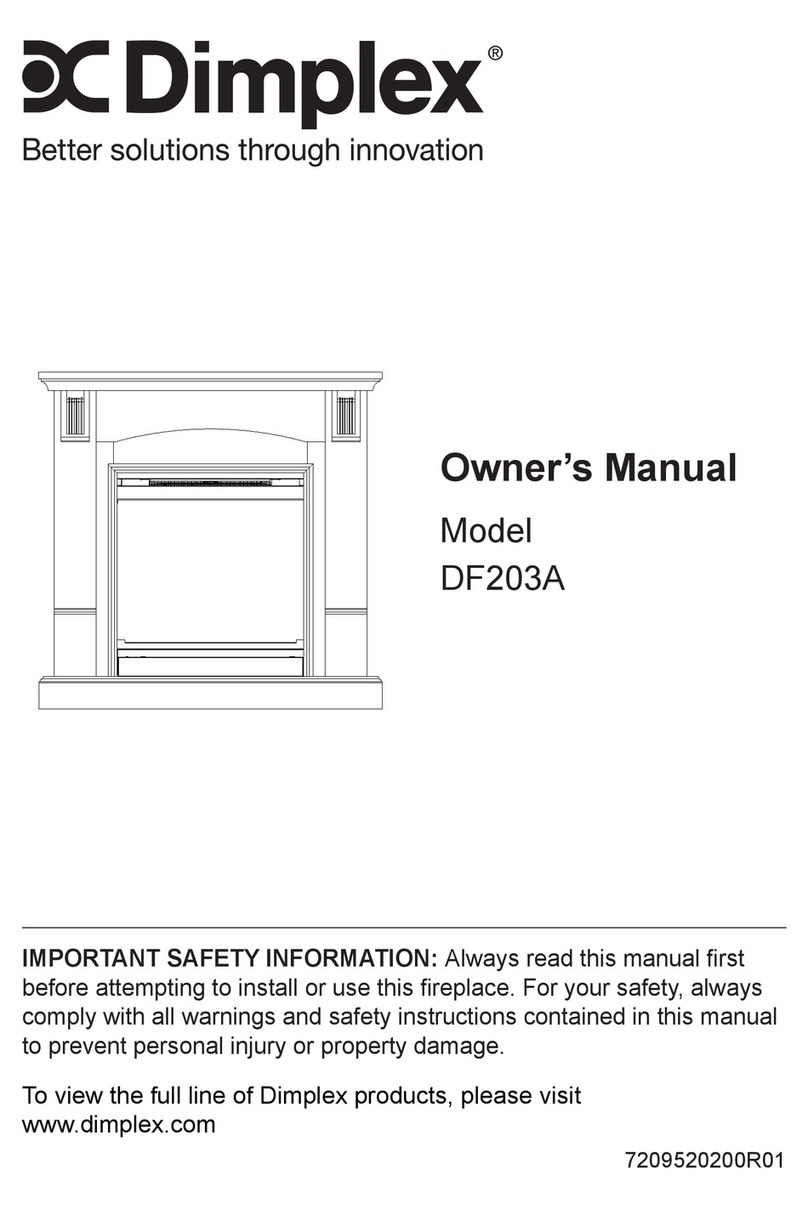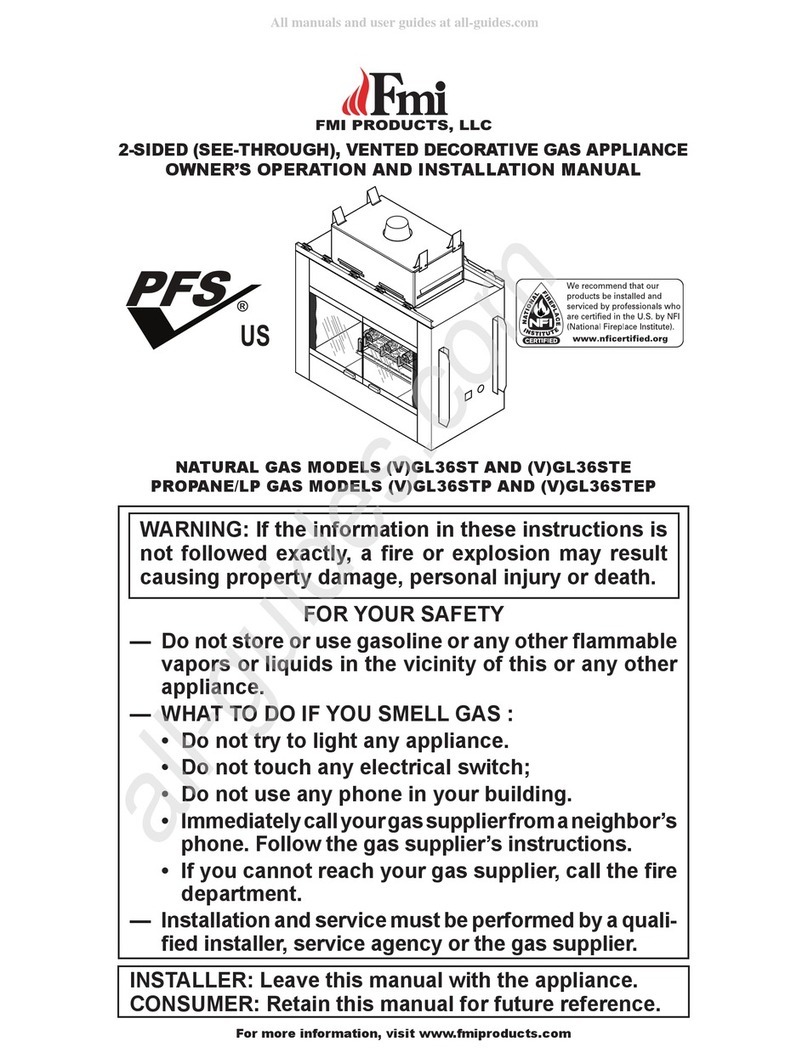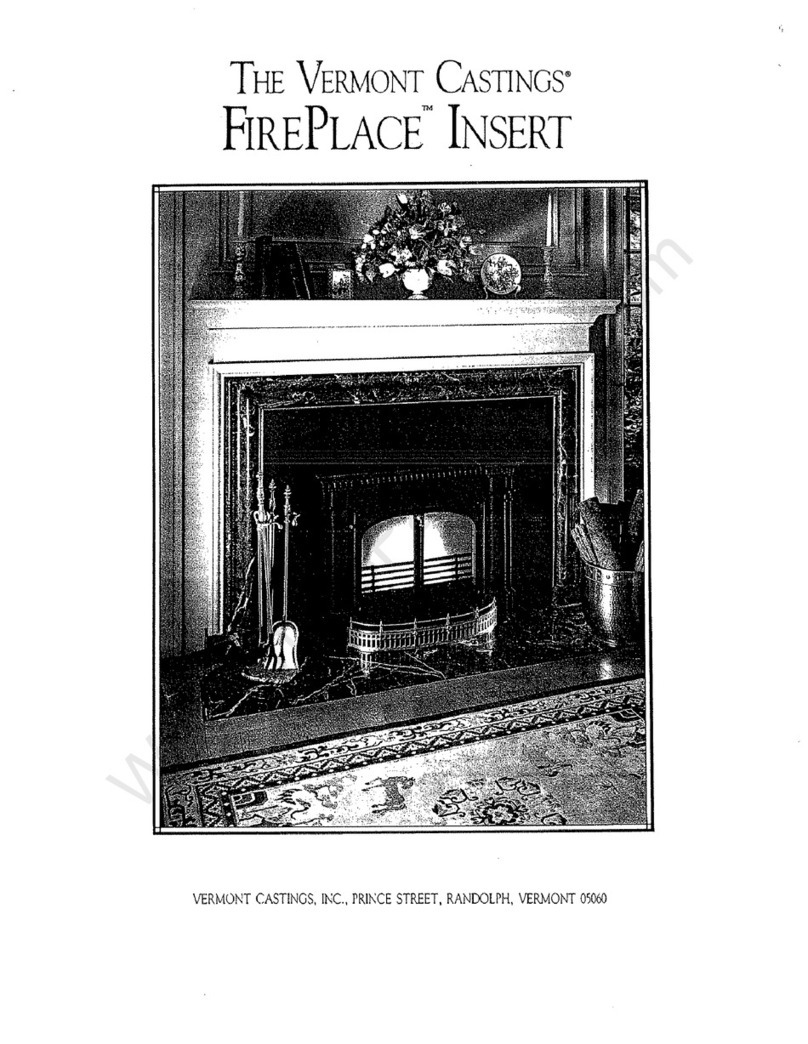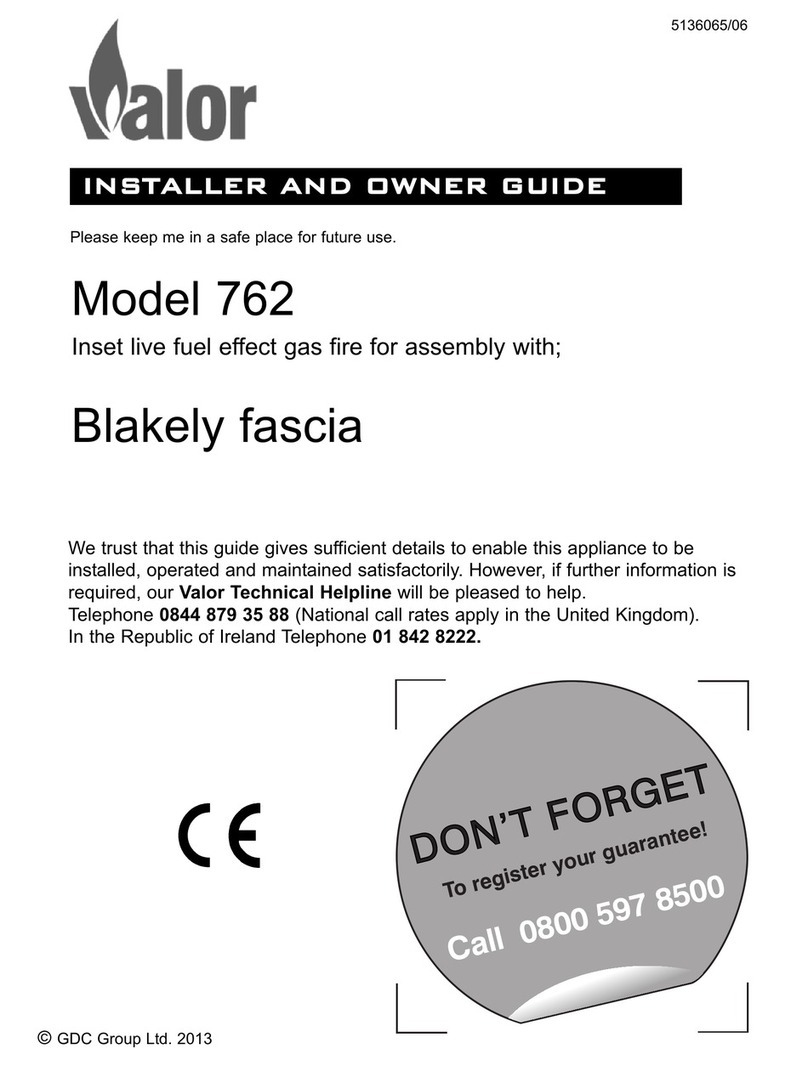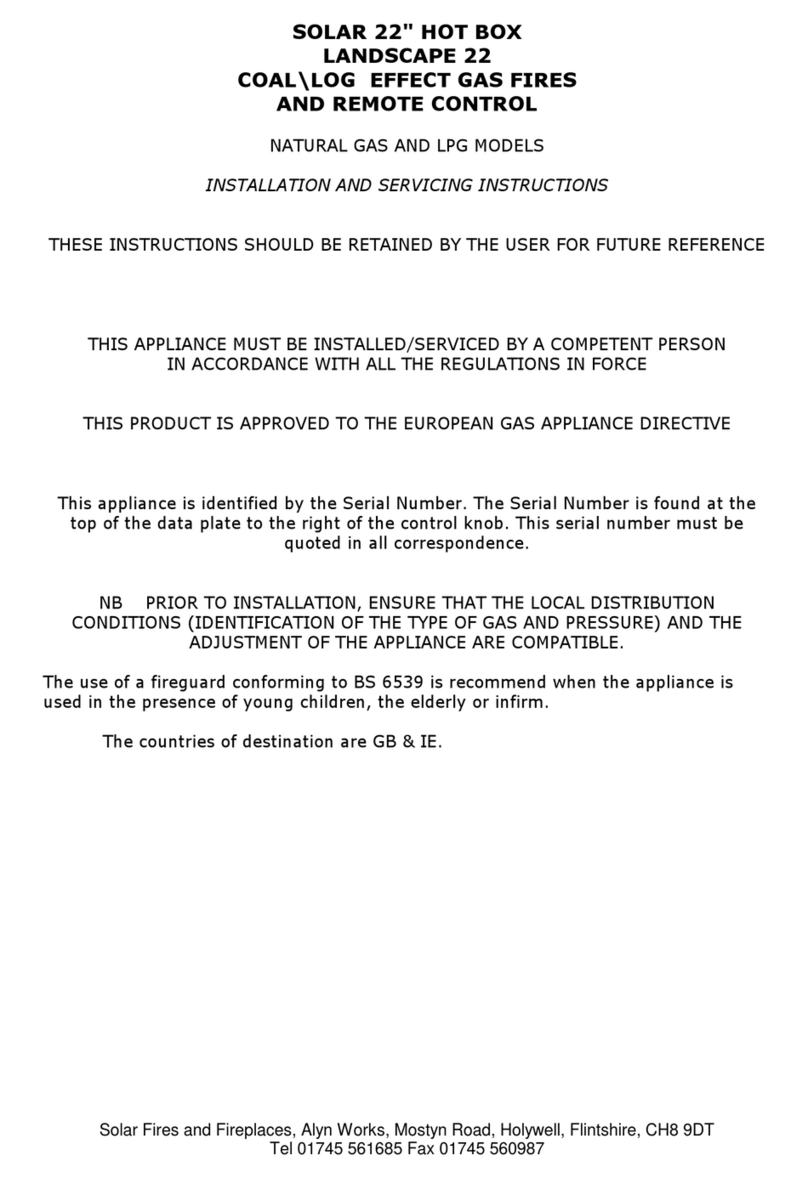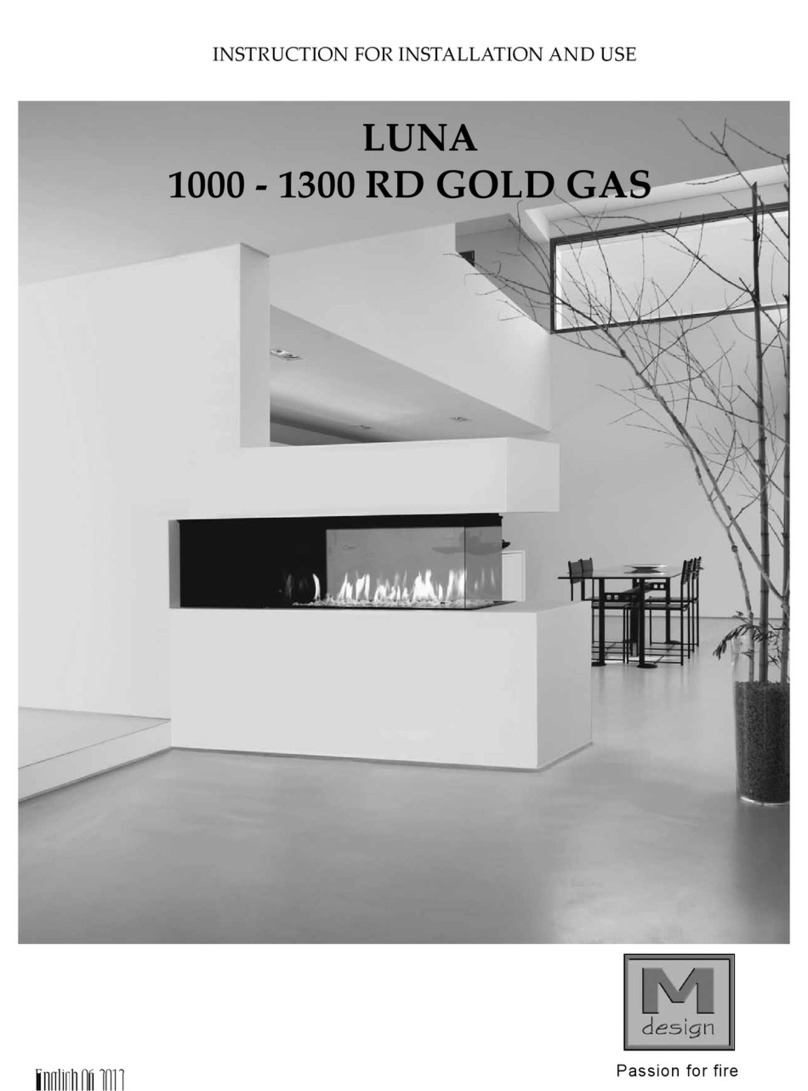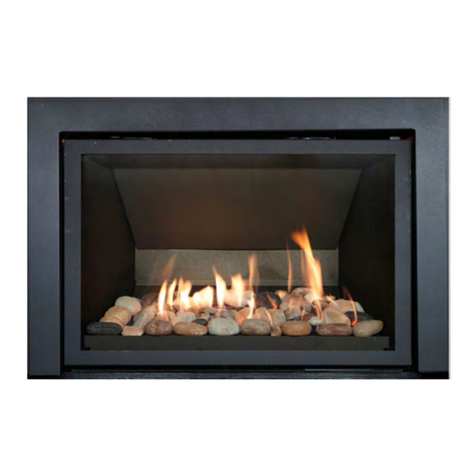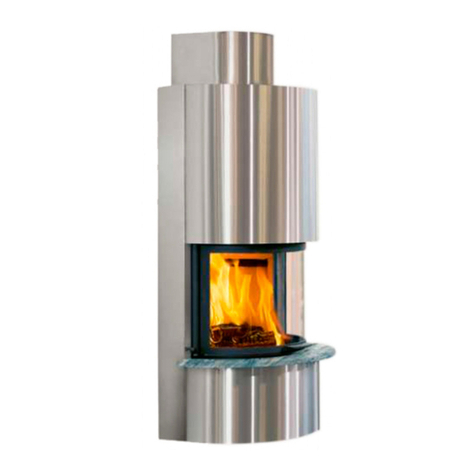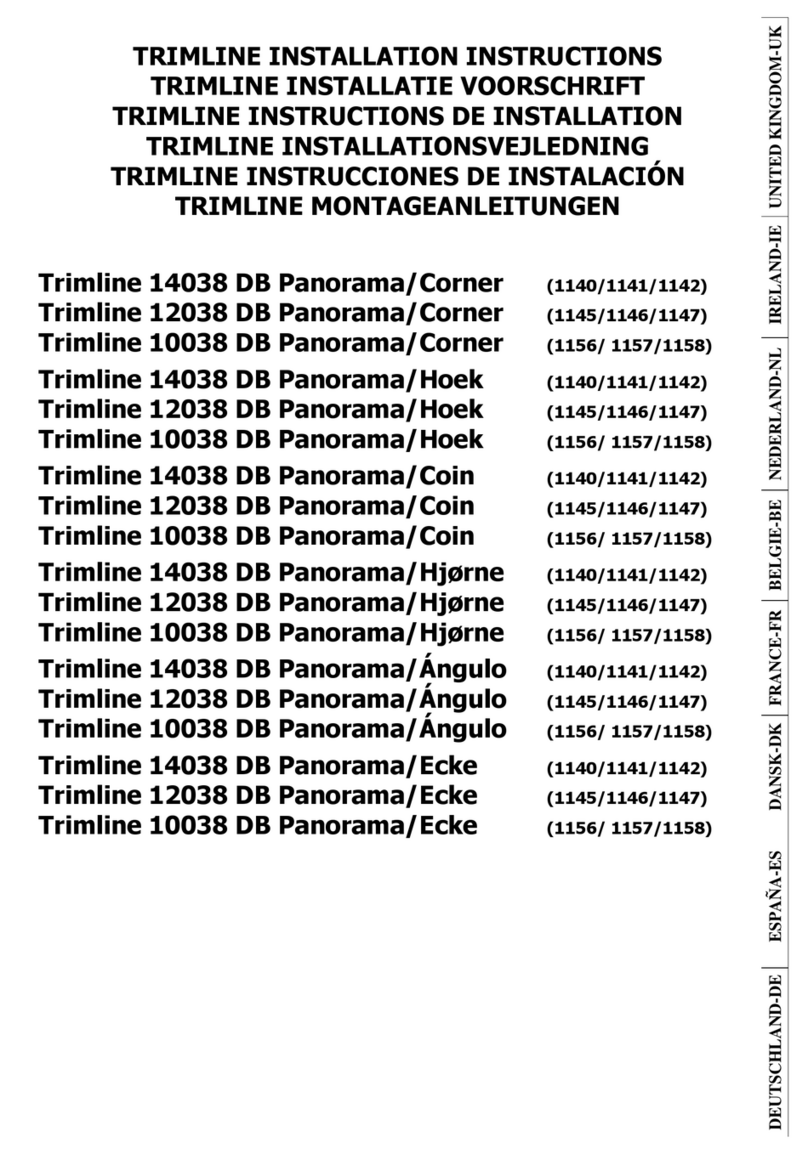
Trimline 38 FSInstallation instruction 14
8 CONCENTRIC FLUE SYSTEM
The concentric ue system is composed of an inner ue and
an outer ue. These ues have been set up concentrically so
the combustion gases will be discharged via the internal ue
while the fresh combustion air is supplied via the gap between
the inner and outer ues.
8.1 Components of the concentric
uesystem
Different connections are possible using the concentric ue
system. These are:
Through the roof face and through the exterior wall
The pathway used for this system can be laid in different ways,
but there are a few important conditions:
• The total allowed vertical ue length must not exceed
9metres (the sum of the ue length and calculation lengths
for the bends).
•90° bends have a 2-metre horizontal calculation length.
•45° bends have a 1-metre horizontal calculation length.
•The outlet can be installed at any point on the roof face or
exterior wall (supply and discharge in an identical pressure
area), but must meet applicable regulations.
•Flue pathways must not be insulated.
NOTE
Ensure the restriction plate is mounted in the correct
manner, as indicated in these instructions.
The correct restriction plate will provide the unit with the
most optimal efciency, ame image and combustion.
Mounting an incorrectly placed restriction plate may cause
malfunction of the unit.
8.2 Indirect/direct façade connection if
applicable (See Chapter 8)
The outlet may also be installed above the exhaust in the
wall, taking any hindrance to the surrounding area into
consideration, in accordance with national, regional, local
standards and regulations.
NOTE
Ensure wind pressure on the outlet is not excessive,
such as in locations with a balcony, at roof, corners and
very narrow alleys, etc., as this can negatively affect the
performance of the unit.
•Make a recess in the façade of around 155mm when
using Ø100-150 ues (keep an extra space of 50mm in
arefractory façade around the outer tube) and t the façade
pass-through with the wall plate on the inside of the wall.
The wall plate of the exterior façade pass-through must be
sealed sufciently against the wall on the outside to avoid
moisture and/or ue gas leaks leaking into the living space.
We recommend our clearance box use as a direct façade
pass-through through a refractory façade.
• The ue should be encased if necessary. Even if the ue
isto be installed along non-refractory materials, sufcient
re-resistant measures must be taken.
•Determine the position of the unit and outlet and begin
construction of the ue with the connection on the
unit, paying attention to the direction of installation and
connecting the elements by means of clamp strips.
• The tted pipe can be used between the bends or when
connecting to the unit. If necessary, use wall brackets
tosupport the ue.
Mounting using the roof pass-through option
• The ue outlet can be located at any random place on the
roof face (supply and exhaust in identical pressure areas)
and must meet the applicable rules and regulations.
• A roong sheet for a at roof or a roong sheet lead for
sloping tiled roofs can be used for a watertight duct. Use
various bends for the slope, if required. The recess in the
roof decking should be 5cm larger all around to ensure
sufcient re resistance.
•One needs to take into account the regulation regarding
re resistance between rooms (See national, regional, local
standards and regulations). A casing of reproof material
(for example, 12mm Promatect re-resistant plate) should
be applied up to 25mm from the outer ue.
•Determine the position of the unit and the outlet and begin
the construction of the ue with the connection on the unit
(always 1 metre vertical rst) pay attention to the direction
of installation. The inner ue must be installed for draining
purposes. Connect the elements using the clamping straps.
Ensure all connections are gastight.
• A tted pipe can be used between the bends or when
making the connection to the unit and/or the roof pass-
through. Use 2 wall brackets to support the ue on each
oor.
8.3 Installation instructions regarding
existing ues (See Appendix 2)
Instructions
The ue gas exhaust system falls within category: C91 and
must be built in accordance with national rules and regulations
and the instructions of the manufacturer, as specied in the
documentation and installation instructions.
This means, among other things, that the chimney pass-
through must not be smaller than 150mm round/square,
butno larger than 200mm, and not ventilated by grilles, etc.
Inthe case of larger chimney pass-throughs, a exible hose of
around 150mm may possibly be used in combination with a
exible hose of around 100mm, as described below. For other
situations, consult your supplier/manufacturer.
8.4 Parts
Check all parts for damage before commencing the
installation. For the conversion of a brick ue to concentric
ue, connected to CC ue system, you need the components
described in Appendix 2.
Comment: The renovation/sanitation set consists of parts:
4. Interior mounting plate
5. Sliding element
8. Chimney mounting plate





















